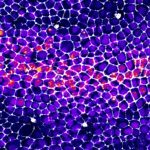Link to Pubmed [PMID] – 38215743
Link to DOI – 10.1016/j.cub.2023.12.031
Curr Biol 2024 Jan; ():
What regulates organ size and shape remains one fundamental mystery of modern biology. Research in this area has primarily focused on deciphering the regulation in time and space of growth and cell division, while the contribution of cell death has been overall neglected. This includes studies of the Drosophila wing, one of the best-characterized systems for the study of growth and patterning, undergoing massive growth during larval stage and important morphogenetic remodeling during pupal stage. So far, it has been assumed that cell death was relatively neglectable in this tissue both during larval stage and pupal stage, and as a result, the pattern of growth was usually attributed to the distribution of cell division. Here, using systematic mapping and registration combined with quantitative assessment of clone size and disappearance as well as live imaging, we outline a persistent pattern of cell death and clone elimination emerging in the larval wing disc and persisting during pupal wing morphogenesis. Local variation of cell death is associated with local variation of clone size, pointing to an impact of cell death on local growth that is not fully compensated by proliferation. Using morphometric analyses of adult wing shape and genetic perturbations, we provide evidence that patterned death locally and globally affects adult wing shape and size. This study describes a roadmap for precise assessment of the contribution of cell death to tissue shape and outlines an important instructive role of cell death in modulating quantitatively local growth and morphogenesis of a fast-growing tissue.







